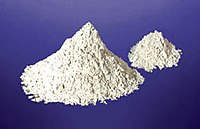
Metacomposites: functional design via titanium nitride/nickel(II) oxide composites towards tailorable negative dielectric properties at radio-frequency range
Sign Up to like & getrecommendations! Published in 2018 at "Journal of Materials Science: Materials in Electronics"
DOI: 10.1007/s10854-018-8557-7
Abstract: Functional metacomposites towards negative dielectric properties via percolating behavior have triggered tremendous fundamental and practical interest. In this paper, titanium nitride was selected to construct percolating metacomposites. Hence, adjusting the frequency region and the value… read more here.
Keywords: frequency; dielectric properties; titanium nitride; titanium ... See more keywords

Weakly Radio-Frequency Negative Permittivity of Poly(vinylidene fluoride)/Ti3SiC2 MAX Phase Metacomposites
Sign Up to like & getrecommendations! Published in 2018 at "Journal of Inorganic and Organometallic Polymers and Materials"
DOI: 10.1007/s10904-018-0983-8
Abstract: While metal or carbon materials served as conductive phase in fabricating metamaterials or metacomposites have been widely investigated, MAX phases could provide alternative route. In this paper, Poly(vinylidene fluoride)/Ti3SiC2 MAX phase metacomposites with different Ti3SiC2… read more here.
Keywords: phase; max phase; ti3sic2; phase metacomposites ... See more keywords

Tailorable radio-frequency negative permittivity of titanium nitride sintered with different oxidation pretreatments
Sign Up to like & getrecommendations! Published in 2017 at "Ceramics International"
DOI: 10.1016/j.ceramint.2017.09.105
Abstract: Abstract Titanium nitride (TiN) with high-temperature plasmonic property can be a promising candidate for metamaterials at radio-frequency region. In this paper, pure TiN powders were pretreated by a facile oxidation process. The introduced titanium oxide… read more here.
Keywords: permittivity; radio frequency; tin; titanium ... See more keywords

Graphene/polypyrrole nanocomposites with high negative permittivity and low dielectric loss tangent
Sign Up to like & getrecommendations! Published in 2019 at "Ceramics International"
DOI: 10.1016/j.ceramint.2018.11.241
Abstract: Abstract Graphene (GNs)/ polypyrrole (PPy) nanocomposites with different content of GNs prepared by in-situ polymerization possess negative permittivity in the range of test frequency. Importantly, the GNs/PPy nanocomposites also have low dielectric loss tangent. ATR… read more here.
Keywords: negative permittivity; ppy nanocomposites; loss tangent; dielectric loss ... See more keywords

Waveguides including negative permeability and simultaneously negative permittivity and permeability materials for sensing applications
Sign Up to like & getrecommendations! Published in 2020 at "Optik"
DOI: 10.1016/j.ijleo.2020.166147
Abstract: Abstract In this paper, a four-layer slab waveguide sensor is proposed. The waveguide has the conventional structure of a substrate, a guiding film and a cladding. At the substrate-film interface, an additional layer is inserted… read more here.
Keywords: simultaneously negative; permeability; negative permittivity; negative permeability ... See more keywords

TiN/Al2O3 binary ceramics for negative permittivity metacomposites at kHz frequencies
Sign Up to like & getrecommendations! Published in 2021 at "Journal of Alloys and Compounds"
DOI: 10.1016/j.jallcom.2020.157499
Abstract: Abstract Metacomposites with negative permittivity have attracted much attention due to their potential applications in electromagnetic shielding, novel capacitances and sensors. In this work, percolative TiN/Al2O3 ceramic composites with different TiN content were sintered and… read more here.
Keywords: permittivity; binary ceramics; tin al2o3; negative permittivity ... See more keywords

Polydimethylsiloxane-multiwalled carbon nanotube composite as a metamaterial
Sign Up to like & getrecommendations! Published in 2018 at "Materials Letters"
DOI: 10.1016/j.matlet.2017.09.051
Abstract: Abstract Negative permittivity is an exceptional property of metamaterials, which makes them unique class of artificial materials with numerous applications ranging from cloaking to wave filters. In this paper we report about the PDMS (Polydimethylsiloxane)–MWcnt… read more here.
Keywords: permittivity; multiwalled carbon; carbon nanotube; negative permittivity ... See more keywords

The effect of thermal loading on negative permittivity in carbon nanofiber/silicone metacomposites
Sign Up to like & getrecommendations! Published in 2020 at "Materials today communications"
DOI: 10.1016/j.mtcomm.2019.100843
Abstract: Abstract Nanofiller/polymer composites have recently received much attention for their potential as metacomposites. To date, however, work has focused on understanding the relation between manufacturing parameters and negative permittivity rather than achieving in-operation adaptability. Therefore,… read more here.
Keywords: thermal loading; permittivity; loading negative; effect thermal ... See more keywords

Low loading carbon nanotubes supported polypyrrole nano metacomposites with tailorable negative permittivity in radio frequency range
Sign Up to like & getrecommendations! Published in 2018 at "Organic Electronics"
DOI: 10.1016/j.orgel.2018.10.003
Abstract: Abstract Metacomposites with conductive polymer matrix toward negative permittivity have promising applications in energy storage devices and electromagnetic shielding. In this paper, carbon nanotubes (CNTs)/polypyrrole (PPy) nanocomposites with different loadings of CNTs have been synthesized… read more here.
Keywords: frequency range; carbon nanotubes; permittivity; negative permittivity ... See more keywords

Constructing honeycomb conductive rings in graphene foam/epoxy resin metacomposites for adjustable negative permittivity, low dielectric loss tangent and mechanical enhancement
Sign Up to like & getrecommendations! Published in 2020 at "Organic Electronics"
DOI: 10.1016/j.orgel.2020.105706
Abstract: Abstract The reduced graphene foam (RGF)/epoxy resin (EP) elastomer composites with adjustable negative permittivity were prepared sequentially through hydrothermal reaction, high-temperature reduction and impregnating processing. The negative permittivity can be achieved by graphene foam owing… read more here.
Keywords: permittivity; graphene foam; dielectric loss; low dielectric ... See more keywords

Novel phenomenon of negative permittivity in silicon-based PiN diodes induced by electron irradiation
Sign Up to like & getrecommendations! Published in 2021 at "Superlattices and Microstructures"
DOI: 10.1016/j.spmi.2020.106755
Abstract: Abstract The negative permittivity of silicon-based PiN diodes is investigated experimentally in the frequency range from 1 Hz to 10 MHz, where electron irradiations and annealing thermal treatments are carried out. The permittivity is found be greatly… read more here.
Keywords: based pin; permittivity; silicon based; permittivity silicon ... See more keywords